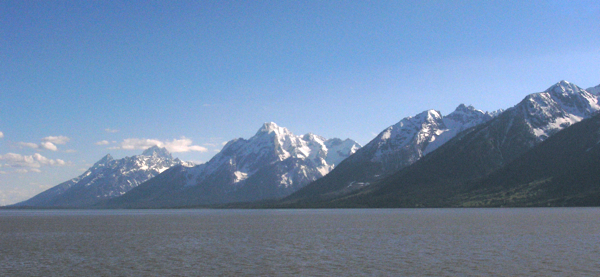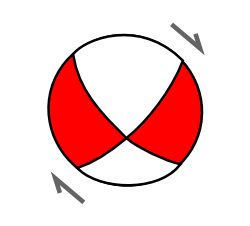![]() Obviously, my holiday has slightly disrupted my weekly seismic updates, but the magnitude 4.8 earthquake that shook Wyoming on Thursday did catch my eye, mainly because I was right in the area only six weeks ago.
Obviously, my holiday has slightly disrupted my weekly seismic updates, but the magnitude 4.8 earthquake that shook Wyoming on Thursday did catch my eye, mainly because I was right in the area only six weeks ago.
Location of Magnitude 4.8 earthquake in Wyoming, Aug 5.
The earthquake was located just to east of Grand Teton National Park, just south of Yellowstone National Park and if, anything, even more beautiful. They host as perfect a range of mountains as you’re ever likely to see; this vista is possibly only matched by a western view of the Southern Alps of New Zealand.

Part of the Teton Range, from the shore of Jackson Lake. Photo: Chris Rowan, 2010
The Teton Range is on the eastern edge of the Basin and Range, a region of extension that has created a series of fault-bounded mountain belts across a large region of the western US, and the topography here is also created by extensional faulting. With that in mind, I looked up the focal mechanism fully expecting to see an extensional fault plane solution. Surprisingly, however, this is not what I found; there is a small component of extension, but the focal mechanism is largely strike-slip, indicating two bits of crust sliding past each other, rather than being pulled apart.

The rupture was at a shallow depth (5 km) and not actually located in the Teton Range, but further east in the Gros Ventre range, a region with several northwest-southeast trending escarpments, suggesting this earthquake was due to right lateral shear on a NW-SE fault. The USGS Quaternary fault map for Wyoming indicates a few faults with similar trends, and that might have recently-produced fault scarps, further to the east (such as the South Granite Mountains Fault System). But the sense of movement on these faults is reported to be extensional, meaning that this earthquake seems inconsistent with even fairly local tectonics.
So, it’s a bit of a mystery; but remember that a magnitude 4.8 has very little regional tectonic significance (it’s a relatively low energy event), so it could be just relieving a bit of local shear strain built up by deformation around it. Of course, it is always possible that some strike-slip displacement did occur across the faults to the east as well, but has gone unrecognised.
I’m planning to post bit more about the larger scale tectonics in the Grand Teton region next week, as I return to blogging about my Yellowstone trip. Meanwhile, just to add to the topicality, Julia is reporting that, in the latest act in a long-running financial dispute with Washington, the Wyoming state governor is is threatening to sell some state-earned parts of the National Park. All I can say is: don’t do it, Wyoming!
And next week, I will actually post a Friday Focal Mechanisms on the Friday. Maybe.



Comments (1)